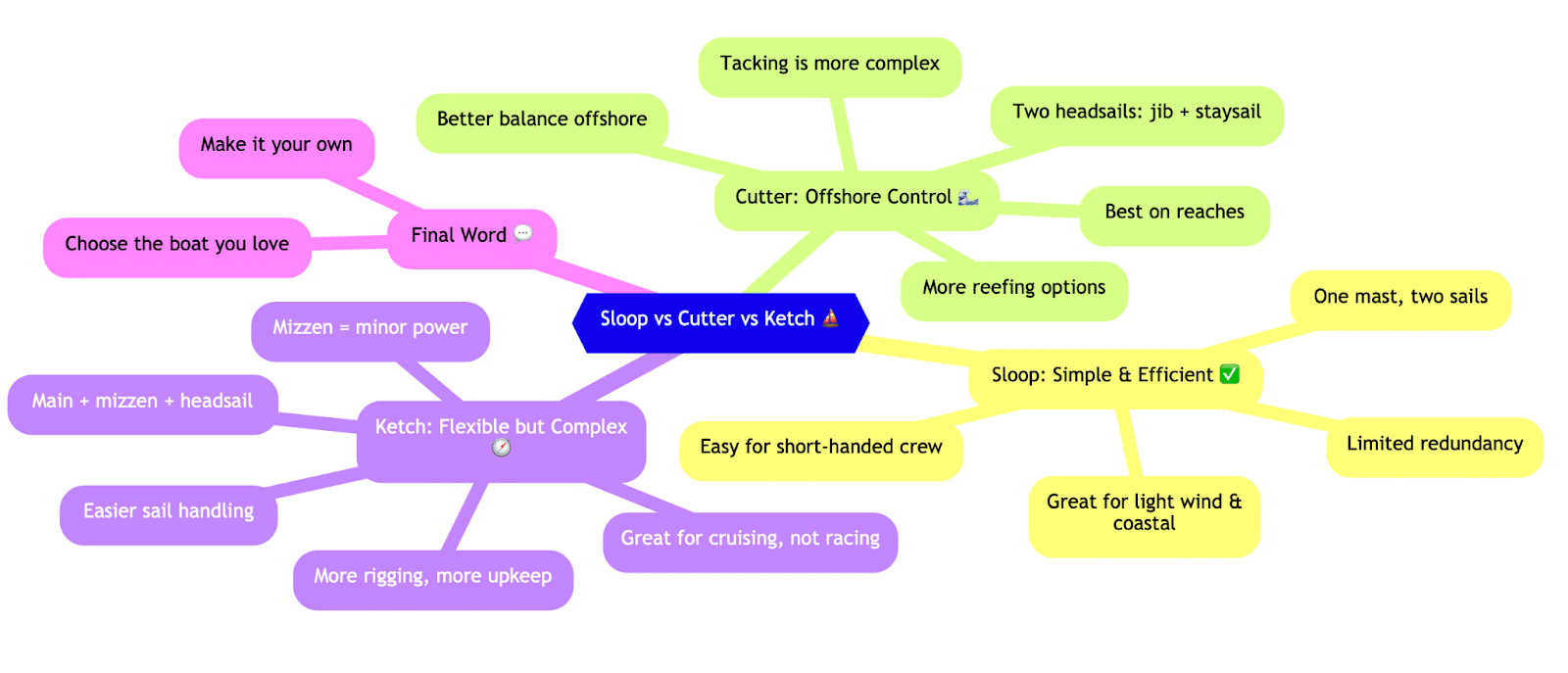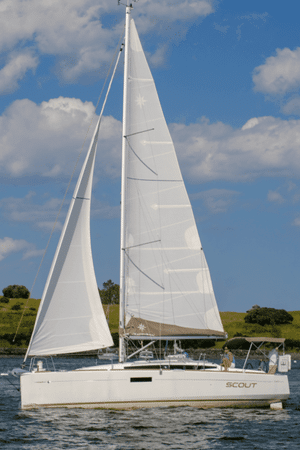Sign up with NauticEd for FREE (no obligation) and receive 2 free boating courses, a free eLogbook and boating resume, and more! If you want to get started in boating or are experienced and want to expand your knowledge and skills, consider taking our many online sailing and powerboating courses.
Sloop vs Cutter vs Ketch: Which Rig Is Right for You?
When choosing a rig, you’re really choosing how you want to sail. Each rig has its strengths—and tradeoffs. So let’s break it down.
Sloop: Simple and Efficient
Sloop rigs dominate the market for a reason. They’re easy to handle, especially if you’re sailing short-handed or single-handed. One mast, one headsail, one mainsail—clean, simple, efficient. Add a self-tacking jib and you’re basically sailing on autopilot in close quarters.
Sloops shine in light winds and tight maneuvers—think buoy racing or short tacks along the coast. Modern gear makes even large sloops manageable, especially when paired with a furling main and headsail. But when it comes to balance and redundancy, they have limits.
Cutter: Control and Options Offshore
The cutter rig is often the rig of choice for serious ocean cruising. You’ll hear it said: “Sloop for sailing around buoys, cutter for sailing around oceans.
Why? Balance and flexibility.
With two headsails—an outer jib or genoa and a staysail—you get more reefing options and better sail shape when partially furled. A furled jib and full staysail outperforms a half-furled genoa any day. You can tweak the balance, lighten the load on each sheet, and keep moving even if you lose one sail.
Yes, tacking can be more involved. Especially with a big genoa, you might need to furl, tack, then unfurl. It’s not ideal for short tacking. And many cutters require running backstays, which are an extra hassle, particularly short-handed. But if you’re on the same tack for hundreds of miles, they let you dial in sail shape like a poor man’s hydraulic tensioner.
The cutter rig really comes alive from a close reach to a broad reach—especially in deteriorating conditions. A staysail alone will point better than a half-rolled jib, and if your sheet angles are right, it can even replace the need for big overlapping headsails altogether.
Ketch: More Sails, More Flexibility (and More Work)
Ketches were built for handling. Smaller sails mean lighter loads, easier gear, and more sail plan combinations. Drop the main and sail on jib and mizzen (“jig and jigger”) when the wind picks up. It’s an old-school way to reduce canvas fast.
Ketches were popular when sail handling was harder—when mainsails were massive, winches weak, and crews limited. With today’s gear, a lot of that benefit fades. Add in the downsides—more masts, more rigging, more money, more complexity—and they’re not as common on modern performance cruisers.
The mizzen contributes less to drive and doesn’t benefit from the higher wind aloft like a tall sloop rig does. That’s why you don’t see racing ketches anymore. Still, for cruising, they motor sail well and give lots of “gears” to match conditions. And for many, the right ketch just feels right.
Final Word: Pick the Boat You Love
Sails and rigs matter, but at the end of the day, pick the boat that speaks to you. That’s always the right answer. Then get out there and make it yours.
You can learn more with NauticEd

Sign up with NauticEd for FREE (no obligation) and receive 2 free boating courses, a free eLogbook and boating resume, and more! If you want to get started in boating or are experienced and want to expand your knowledge and skills, consider taking our many online sailing and powerboating courses.









